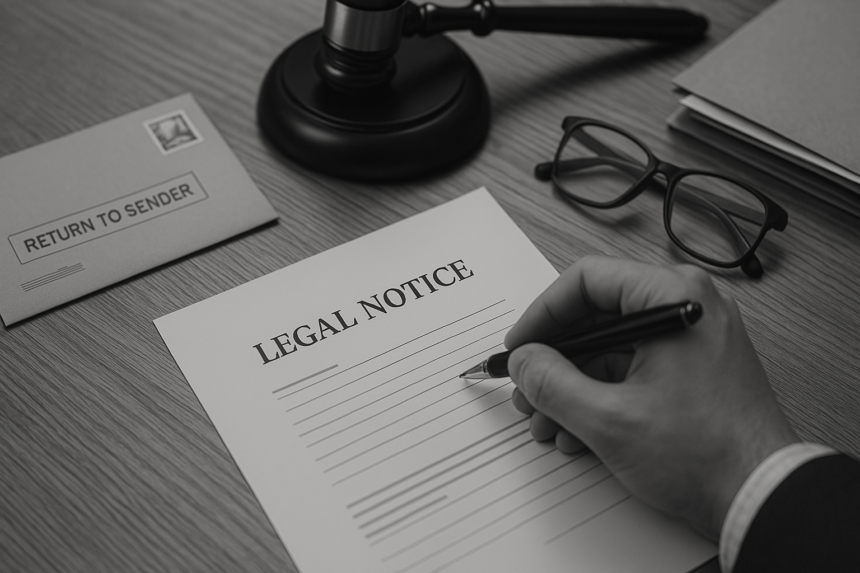How to Handle Legal Notices When Key Contact Info Is Missing
Delivering a legal notice is a critical step in enforcing contract rights, initiating disputes, or protecting your business. But what happens when the intended recipient has changed their address, left the company, or simply failed to provide proper contact details? Sending a legal notice without accurate information can be tricky—but it’s not impossible. In this guide, we’ll show you how to handle legal notices with missing contact information while remaining compliant with best practices and legal standards.
Why Notice Clauses Matter in Contracts
Most commercial contracts include a notice clause—a section that outlines how legal notices must be delivered, to whom, and where. These clauses usually define:
- Accepted delivery methods (email, courier, hand delivery)
- Official address and contact person
- When notice is deemed received (e.g., 3 days after mailing)
When contact info is missing or outdated, your first step should be to return to the contract and review the notice clause. That’s your legal starting point.
Common Notice Delivery Methods
Even if you don’t have up-to-date information, many notice clauses still allow for delivery using traditional or default methods. Here are the most common:
1. Email
- Often allowed in modern contracts
- Look for the designated email address in the contract
- Courts may consider the email delivered if sent to the correct listed address—even if the person has left
2. Courier or Registered Mail
- Provides physical proof of delivery or attempted delivery
- Some laws presume notice has been received after a set period (e.g., 3 business days)
- Use the last known address, even if the recipient has moved
3. In-Person Delivery
- Effective but may not be practical in every case
- Can be delivered to the company’s registered office or reception desk
4. Publication or Public Posting (Last Resort)
- In exceptional cases, courts may accept notice by newspaper publication or public notice
- Often used in litigation or insolvency contexts
Legal Presumptions and What They Mean
Many legal systems allow presumptions of notice—meaning that if you follow the notice clause, the recipient is presumed to have received the message, even if they deny it.
For example:
- If notice was sent to the listed address via registered mail, and wasn’t returned undelivered, courts may presume delivery.
- If the recipient changed addresses without notifying the other party, the responsibility often lies with them.
This legal framework protects your rights when you’ve acted in good faith.
What to Do When Contact Details Are Outdated
Missing or outdated contact information doesn’t mean you’re powerless. Here’s what you can do:
- Check the contract’s last known address and deliver according to the agreed method.
- Verify with public records—such as commercial registries, company websites, or chamber of commerce listings.
- Send notices to multiple points of contact—especially if you’ve had email correspondence with several individuals.
- Retain proof of your attempt—delivery receipts, screenshots, or returned mail.
By demonstrating that you made reasonable efforts to deliver the notice, you’ll be in a stronger legal position.
How to Mitigate Risk Going Forward
To prevent this issue in the future, include these best practices in your contracts and communications:
- Use evergreen notice clauses: Require parties to update their contact details promptly.
- Add backup methods: Include both email and physical delivery options.
- Designate a role, not a person: Use “Legal Department” or “Managing Partner” instead of naming an individual.
- Maintain updated internal records: Keep logs of client contacts and delivery preferences.
- Reconfirm notice details annually: Especially for long-term projects or agreements.
These simple additions can avoid costly confusion down the line.
Conclusion
Handling legal notices with missing contact information requires a smart, methodical approach. Start with your contract’s notice clause and follow the prescribed steps. Use fallback methods like email or courier to the last known address, and retain solid proof of delivery. And to avoid this issue altogether, make sure your future contracts include updated, flexible notice clauses.
Legal notices are only as strong as the records behind them. By planning ahead and acting prudently, you protect your rights—even when the recipient disappears



Leave a Reply